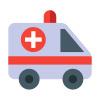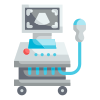Fill out form to enquire now
CECT KUB
Medintu has collaborated with the best pathology laboratories that are NABL and NABH certified and follow ISO safety guidelines to provide the best CECT KUB at an affordable price for needy individuals. This is a more advanced imaging study wherein the CT scan procedure has to be done using the aid of contrast agent in order to have better details with high resolution when viewing the kidneys, ureters, and bladder. It is usually a diagnostic and assessment tool for most conditions involving the urinary tract such as kidney stones, tumors, infections, blockages, and trauma. Contrast material is an improvement factor since it offers better viewability in parts of soft tissues and blood vessels, save for those structures that sometimes might not be visible.
An abdominal and pelvic regions 3D view would give the possibility to enhance the evaluation of urinary system anatomy and functionality, for which the CECT KUB is highly valuable in the early stages of diagnosis and treatment plans, monitoring of conditions concerning the kidney, ureters, and bladder. To schedule an appointment for CECT KUB, simply contact Medintu or call our customer care at +919100907036 or +919100907622 for more details and queries.
How CECT KUB Works?
CECT KUB is a diagnostic imaging modality that uses X-rays, along with intravenous contrast agents, to produce detailed cross-sectional images of the urinary tract: kidneys, ureters, and the bladder. So, here’s the procedure:
- Preparation
Patients may be asked to have some hours of fasting preceding the procedure if a contrast agent is likely to be utilized.
Contrast medium, often an iodine derivative, is injected into a patient’s vein via the access of an IV line. The contrast medium assists in increasing the density and definition of soft tissues and blood vessels, and thus even structures like the urinary system, which includes the kidneys and bladder, are relatively easy to define in CT scans.
2.Scanning:
A large machine with an X-ray tube rotating to enable it capture views of the body from every angle is termed as a CT scanner. A patient is positioned lying on a moving table of a CT scanner.
During the CT scan, a moving series of thin images slices takes pictures and the computer generates a cross-section of the urinary tract with a high level of detail.
Contrast material introduced into the blood helps to identify the urinary system in images and make the kidneys, ureters, and bladder more vivid.
3.Image Creation:
The computer processes the images captured by the scanner and creates a 3D representation of the region. The contrast agent marks areas that contain blood flow to help in the visualization of structures such as tumors, stones, or infections.
The images clearly show the condition of the kidneys, ureters, and bladder and detect any defects such as blockages, injuries, infections, and cancer.
4.Post-Scan:
A few hours will be spent with the patient after the scan in case something adverse happens from the effects of the contrast material.
The radiologist then develops a report of the scanned images and delivers them to the ordering doctor who proceeds to relay the same to the patient.
Indications for CECT KUB
CECT KUB is an imaging tool which helps to diagnose and assess many conditions around the kidneys, ureters, and bladder. Several common reasons for performing CECT KUB include the following:
- Nephrolithiasis (Kidney Stones):
It is used for detecting the size, presence, and location of stones within the renal pelvis, calyces, or ureters.
In the assessment by CECT KUB, the patient’s disease severity and complications, such as obstruction or infection, are indicated.
2.Ureteral Stones
Useful in the case of stone in the ureters, which may sometimes be associated with pain or obstruction or hydronephrosis.
Better-quality images help in accurate estimation of the location of stones and possible complications.
3.Stone in the bladder:
In order to identify stones present within the bladder, one might be associated with urine retention, pain, or hematuria.
CECT offers better clarity as compared to plain X-ray or ultrasound.
4.Urinary Tract Infections :
In relapsing or complicated UTIs, CECT KUB may detect an underlying cause as obstruction, infection, or other structural alterations of the urinary tract.
5.Renal Tumours or Cancers:
Assessment and diagnosis of renal cell carcinomas or other benign lesions.
The enhancement by the contrast material enhances the outline of tumors to enable adequate staging and therapy planning
6.Bladder Cancer:
CECT KUB can establish the presence and extent of bladder cancer, such as tumors, invasion into adjacent structures, or metastasis to the rest of the body.
7.Damage to the Kidneys and/or Bladder due to Injury
If the kidneys or the ureters or bladder are suspected to be involved in an injury (perhaps following a car accident or falling), CECT KUB assesses the damage, tearing, or hematoma.
This is very useful when there is blunt abdominal trauma for the assessment of possible damage to the organs.
Benefits of CECT KUB
The CECT KUB has numerous advantages, hence it is the most preferred technique for imaging diagnostics of the conditions related to the kidneys, ureters, and bladder. Benefits of this diagnostic procedure are:
- High-Resolution Detailed Imaging
The CECT KUB provides high-quality detailed images of the urinary tract (kidneys, ureters, and bladder) for better visualization of soft tissues, blood vessels, and urinary system structures.
Contrast material does help in the better visualization of these structures so that abnormalities seen could not be identified if some other imaging modalities are applied, such as with X-rays or ultrasound.
2.Exact Diagnosis:
CECT KUB is a fine mode of diagnosing kidney stones, tumors, bladder stones, obstruction, and even infection.
The detailed pictures help the doctors trace the location, size, and extent of the abnormality that may require treatment followed by follow-up.
3.Non-Invasive and Quick Procedure
Unlike surgery, which is a non-invasive diagnostic test procedure, CECT KUB tells the physician precious details without cutting into the body. Since it is quick, in approximately 10 to 15 minutes, it can be easily administered in emergency situations where the time factor is also concerned.
4.Comprehensive Evaluation
CECT KUB can image the whole urinary system, including the kidneys, ureters, and bladder in a single scan. Therefore, the whole anatomy and functions of the urinary tract can be studied together.
It can simultaneously diagnose all types of stones, infections, cancers, and obstructions, so that doctors do not miss something.
5.Enhanced Detection of Mild Abnormalities
Contrast agents enhance the images provided that enables the identification even of minimal abnormalities in the urinary system that cannot be seen on other radiology scans.
It benefits in the diagnosis of even smaller tumors or smaller sizes of kidney stones since resolution has a very high accuracy in detecting them.
6.More Vibrant Visualization of Blood and Tissues:
CECT KUB increases blood vessel, soft tissue, and organ visualization. This is necessary to evaluate conditions such as a tumor, infection, or abnormality of the vascular system. It is very useful in assessing conditions such as renal or bladder cancer, where blood supply and tissue structure are particularly relevant to staging and treatment plans.
How Does CECT KUB Differ from Other Imaging Techniques?
CECT KUB stands for Contrast-Enhanced Computed Tomography of the Kidneys, Ureters, and Bladder. This is a specialized imaging technique, showing both high-resolution and detailed images of the urinary tract through the help of a contrast agent and CT scanning. It differs from other types of imaging techniques in a couple of ways, each having specific benefits for diagnosing or evaluating conditions in the kidneys, ureters, and bladder. The comparison between CECT KUB and other common methods is as follows:
- CECT KUB vs. Ultrasound
Mechanism:
CECT KUB involves the use of X-rays along with a contrast material to provide detailed cross-sectional images. Ultrasound, on the other hand, uses high-frequency sound waves to create real-time images of the body.
Image Detail:
CECT KUB provides detailed cross-sectional images of high resolution and can view soft tissues, blood vessels, and bones in detail. This is very effective for the detection of small abnormalities, like kidney stones or tumors.
Ultrasound can offer less detailed images and tends to fail in areas of the body where there is gas or fat, which interferes with sound waves.
Drawbacks:
CECT KUB cannot be performed if patients have allergies or kidney dysfunction because it needs a contrast agent.
Ultrasound, however, is non-invasive, and contrast is not required; but has a limitation in terms of viewing some structures or deeper tissues.
- CECT KUB vs. X-ray
Mechanism:
The X-rays and CECT KUB both use the principle of X-rays, but the latter captures many cross-sectional images at different angles and compiles them to form a 3D image of the urinary tract, whereas the X-ray will provide a 2D image.
CECT KUB has a higher resolution than an X-ray, which makes it easier to detect small stones, tumors, or other abnormalities.
X-ray is generally used for simple imaging, such as identifying large kidney stones, but lacks the detail required to detect more complex issues or soft tissue abnormalities.
Use of Contrast:
While X-rays are normally not contrast-enhanced, CECT KUB is a contrast-enhanced technique which increases the visibility of soft tissues and vascular structures and therefore is very useful in diagnosing infections and cancer.
- CECT KUB vs. MRI
Mechanism:
CECT KUB is X-ray based with iodine or other contrast agents whereas MRI depends on magnetic fields and radio waves to produce images that do not involve radiation.
Resolution & Detail:
MRI is excellent to provide high detail images for soft tissues and, therefore useful in diagnosing soft tissue tumours, muscle or nerve-related disorders, as well as those where high detail of soft tissues is needed. However, it is usually not as strong in demonstrating bones or aerated structures.
CECT KUB helps better to detect bone trauma and urinary tract stones and facilitates 3D imaging capability, which MRI does not offer.
- Test Type: CECT KUB
- Preparation:
- Wear a loose-fitting cloth
- you should fast for 4-6 hours before the scan
- Carry Your ID Proof
- Prescription is mandatory for patients with a doctor’s sign, stamp, with DMC/HMC number; as per PC-PNDT Act
- Reports Time: With in 4-6 hours
- Test Price: Rs.3500
How to book an appointment for a CECT KUB?
To schedule an appointment for CECT KUB, simply contact Medintu or call our customer care at +919100907036 or +919100907622 for more details and queries.
What is CECT KUB?
CECT KUB is a shortened term for Contrast-Enhanced Computed Tomography of the Kidneys, Ureters, and Bladder. It refers to a diagnostic imaging test where an X-ray is combined with a contrast agent to help develop clear images of the cross-sectional urinary system parts, including the kidneys, ureters, and bladder.
What is the application of CECT KUB?
It is used to diagnose and assess conditions in the urinary tract. Such conditions include kidney stones, bladder stones, tumors, infections, and obstruction. It gives high resolution to help doctors determine accurately the size, location, and seriousness of the condition.
What is the difference between a CECT KUB and a standard CT scan?
The most obvious difference is the use of a contrast agent in CECT KUB. Contrast material enhances the visibility of soft tissues, blood vessels, and other structures within the urinary system, hence providing more detail than a regular CT scan without contrast.
Is CECT KUB painful?
The procedure itself is non-invasive and usually painless. However, you may feel some discomfort when the contrast agent is injected into your vein. Some people may feel a warm sensation or mild flushing in their body during the injection, but this is usually temporary.
How do I prepare for CECT KUB?
Preparation for CECT KUB generally includes:
- Fasting for 4-6 hours prior to the procedure if the contrast is to be administered orally or intravenously.
- Reporting to your doctor any allergies (specifically to contrast media or iodine) and any kidney diseases.
- You may be asked to change into a hospital gown and to remove any jewelry or metal objects.
Are there risks associated with CECT KUB?
CECT KUB is safe, but like any medical intervention, it does come with risks:
- Contrast reactions: Although rare, some patients may have an allergic reaction to the contrast material.
- Kidney function: In patients with pre-existing kidney problems, the contrast agent may cause further stress on kidney function, so it’s important to inform your doctor if you have a history of kidney disease.
- Radiation Exposure: Because CECT KUB involves the use of X-rays, there will be some radiation exposure, though it is relatively minute. Benefits of an accurate diagnosis often outweigh the risks.
How long does the process of CECT KUB take?
The actual scan typically lasts between 10 to 15 minutes. The prep time will depend on whether a contrast through an IV is required as well as if more images will be needed.
Can I drive after having undergone a CECT KUB scan?
Because this is an intravenous contrast study, you might be instructed not to drive afterwards. You will probably be discouraged if you have been sedated or in the event of a contrast reaction. Plan for a driver home.
Why Choose Medintu for CECT KUB?
Medintu is an online medical consultant, which offers home services not only in your city but also in all major cities of India, such as Hyderabad, Chennai, Mumbai, Kolkata and others. This makes it easy for us to work with diagnostic centers that boast of having the most accurate equipment. The customer service for booking the appointment of the services is available 24/7 and Medintu also comes with instructions. Medintu has not only the best diagnostic centres, but it offers them at very cheaper prices. If you have been tested, you can promptly schedule an appointment with a health care service through our list of skilled physicians. For appointment for CECT KUB, you can chat with us through Medintu or call our customer care at 919100907036 or 919100907622 for more information or inquiries.





